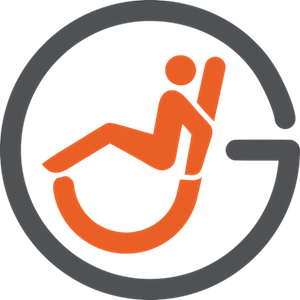Universal access. Think about it. What do those two words really mean?
As a disability advocate, those two words are immensely important in the work that I do. I am constantly reminding others, especially those who are able bodied and may be required to provide some sort of accommodation, that the foundation behind universal access is the idea of making something accessible to everyone and not just a select few. In other words, a design that is “universal” provides access to everyone.
Consider the idea of a long, wide flight of steps. Our nation’s monuments that I frequent provide a great example. Here’s an image of the Lincoln Memorial, constructed in 1922 – 94 years ago:
Now, let’s be realistic: it is an almost-100 year old national relic. It was built at a time where there weren’t many people with disabilities in the public eye in our country. However, fast-forward 100 years, and the ADA is real. There are stringent laws that regulate policies on what accommodations must be provided to people with disabilities, especially in public places. So, yes, there is now a route that a patron with a disability could take to get some great photos with and inside the Lincoln Memorial – however some of the most scenic and well-known photographs are essentially made impossible because wheels don’t meet steps very well.
Now, consider this image:
It not only provides steps for those who would prefer to take them but it provides, built into the design, universal access to those who may be using wheels. And let me be clear: I’m not just talking about myself or someone like myself when it comes to this design. What if a user is using a bicycle? What if a person is temporarily injured and using crutches? Let me reiterate that universal design is a principle that makes access available to everyone – not just a select (able-bodied, in this case) few.
Universal design is one of the biggest reasons that I am a big fan of Apple, even when it may not be popular to be. There devices are expensive, their software engineering is restrictive, and many don’t believe with their company principles. However, Apple is a company that has been, consistently, on the forefront of accessible and universal access for years. The company often incorporates many accessibility features, by default, into their devices. I have many friends who are deaf/hard of hearing or vision-impaired that use an Apple iPhone seamlessly, even without being able to hear a chime or view the touch screen. The ideas built into these devices that can be turned on straight out of the box are incredible. Their commitment to accessibility through universal design is unparalleled in what I’ve seen in the technology industry and, really, anywhere else in the business world for that matter.
And these features don’t just help the folks who may have hearing or vision impairments – they can help us all. I’ve seen many older users turn the magnification on their text wayyyyyyyy up. :)
Recently, I reached out to the manager of the condo building that I live in, to inquire about the Condo Association’s potential ability to purchase an arm ergometer. It’s the main way that I exercise and the machine itself allows me to get a really great cardiovascular workout. I haven’t used one regularly since I graduated from college 2 years ago, when I would use one 3-4 times each week for an hour. Talk about a great workout!
As I began to research and provide the facts for a legitimate request – I realized something. Why should I request a machine that is simply an arm bike? Yes this would be available and useful for all users, even if they were able bodied – everyone could use a great upper body cardio workout! But what if there was a machine that acted not only as an arm bike, but also as a recumbent leg bike? Lo and behold – there was! Instead of providing details solely on arm bikes, in my research I also included links to machines that other users would be able to use to workout many areas of their bodies – and not just their arms.
To round out my thoughts on universal design, I want to include a short video from the GRAMMYs that I watched a few weekends ago. Consider what point Mr. Stevie Wonder is trying to get a across as he says, “Y’all can’t read this. You can’t read this, you can’t read Braille,” and “We need to make very single thing accessible to every single person with a disability.”
Thanks for reading!


